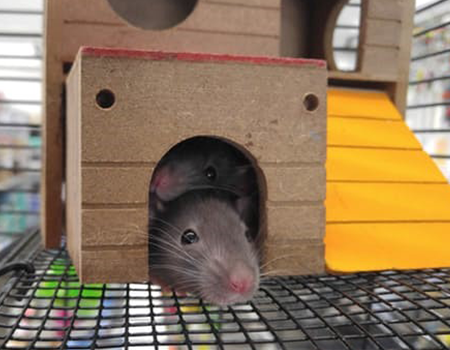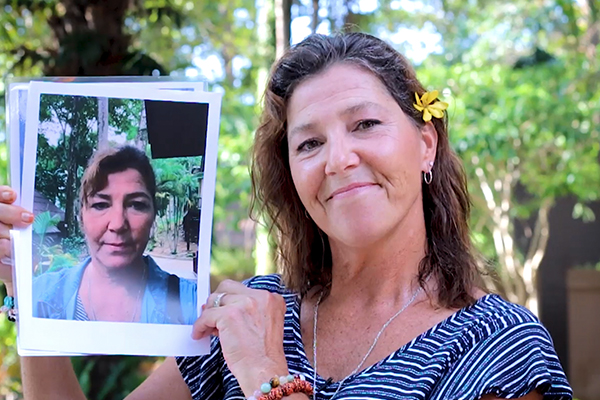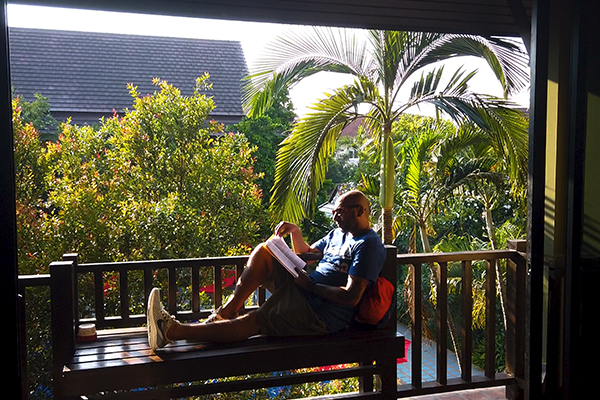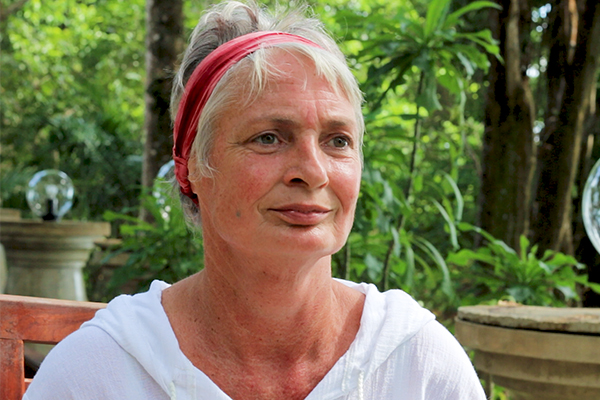
KETAN JALTARE
BA, MSc (Psychological Counseling)
Program Manger, DARA Koh Chang
Addiction is a complex problem that societies have tried to understand for a long time. Scientists and Psychologists alike have been taking baby steps towards a better understanding of addiction for decades. And there is no doubt that we have made progress.
But what is it that we have understood so far?
This is a complex question that will take us more than just one article to answer!
We have made significant headway into the neurological anomalies that are either the cause of or the result of addiction. We know that learning plays a significant role in addiction. There are psychological theories that emphasize the influence of internal conflicts and drives on the development of an addiction.
But what I want to focus on is the relational aspect of addiction and what this means for addiction treatment. What do I mean by relational aspect of addiction?
Through my years of working closely with addicts, I have noticed one common denominator that seems to go hand in hand with addiction – and that is,
A sense of Isolation.
Often my clients will say things like, “I have always felt different!” or “I have never felt like I fitted in”. I believe that – far from being benign self-commentaries – such statements are in fact significantly instructive about what is really going on beneath the surface
‘RAT PARK’

The individual is saying that they find it difficult to relate to people. They are expressing a fundamental need to feel connected to others. This need may have been frustrated or unmet for many years, or in some cases an entire lifetime. I am by no means the first person to make this connection between a sense of isolation and a propensity toward addiction. In the late seventies the Canadian Psychologist Bruce Alexander and his colleagues performed a seminal set of experiments that gave weight to this school of thought that a lack of connectedness could lead to addiction[1]. They demonstrated the effect that social isolation had on the addictive patterns that rats demonstrated. The results of this experiment, which has been called the ‘Rat Park’ experiment, went a long way in dispelling many myths about addiction and its causes. Up until that point, the accepted scientific opinion was that that drugs were inherently addictive. Ironically enough, this conclusion was also based on experiments that had previously been performed on rats in cages. These first Rats were placed in stark cages and given small doses of heroin or morphine. The amount of substance given to the rats was incrementally increased. The rats would then keep increasing their consumption of the heroin or morphine, and invariably ended up dying of overdoses. It was observed that these caged rats began to prioritize drug consumption over drinking and feeding, even when food and water were freely available to them. The results of these studies were as depressing as they were bizarre – once addictive substances have got their ‘chemical hooks’ in you so to speak, hopeless addiction and death seemed like inevitable outcomes. But Bruce Alexander noticed a flaw in the design of these experiments. He realised that all of these rats were kept in their cages alone. In other words, they led an isolated existence. To him it was quite obvious that this was a recipe for ensuring that the rats ended up prioritising the drug over everything else that mattered for their survival. He decided to refine the experimental design, and the experiment he created came to be known as ‘Rat Park’. The rats in Alexander’s experiment were not kept in stark, cramped little cages with nothing to do except choose between drugs or food, instead they were housed in an enclosure that was more than a hundred times larger than the typical laboratory cage. They also had a lot of company – they were kept in cages with more than a dozen rats of both sexes, where the rats had an abundance of things to keep them occupied. They had coloured balls, tunnels, wheels, cheese, and other rats to play with. What he found was that the rats now, given a choice between just water and drugs, almost never chose the drugs. Although this was not taken too seriously at the time, over the years, we have come to see the significance of this experiment. The main thing that had changed for the rats was that they were not isolated anymore. Does this mean that we have the key to unlocking the secret to addiction? Of course not! But this seems to be a central element of what either causes or perpetuates addiction.
ALONE IN A CROWDED ROOM

How does this isolation occur in human beings though? It’s not like we grow up in cages where we are completely in isolation! We are surrounded by other people all our lives. We interact with people almost all day, everyday. One could hardly call that an isolated existence. But let’s take a deeper look at what makes someone say that they feel different or like they cannot relate to other people. Most people that I have worked with have undoubtedly faced a significant amount of judgment in their lives. You will probably agree with me that our society, as progressive as we think it might be, does not take kindly to addicts. The stereotypical addict or alcoholic is often looked down upon or judged. We make assumptions about them that are almost always untrue. We may assume that they must be a bad person, or that they have made bad choices. We might even think of them as being dangerous or untrustworthy. Even their own families sometimes disown them. Addicts are often rejected wholesale by their society. They often keep their issue in the dark, because they know that if they are found out, they might or suffer even more judgment or rejection and they might even be thrown in jail. They constantly hear moralizing messages telling them that they are not a worthy citizen. I put myself in their shoes sometimes and imagine what it would be like to have lived life having to hide from society, a life where I constantly felt judged and rejected. Would this not lead to a sense of social isolation?
Most people that suffer from addiction have also had rather difficult experiences to overcome. They might have been brought up in a home where one parent was absent, or where they were abused physically, sexually or emotionally. They might have experienced traumatic abuse outside of their home environment. When they try to talk to people about it they often are told to keep their mouth shut or in some way dismissed or invalidated. All of these experiences can lead to the individual to consciously our unconsciously internalizing the message that they are,
Fundamentally ‘defective’ as a human being, and ‘different’ from other ‘normal’ people.
They are led to believe that nobody will understand them even if they tried to open up about what they really feel or think. This is understandable given that this is what past experiences has often taught them. It is very likely that they have had to keep these experiences hidden or suppressed and live with that burden all their lives. This breeds an intense sense of being ‘stuck in ones own world’ with these deep and heavy emotions and with nobody to share them with. It is hardly surprising therefore that the escape offered by addictive substances is often so irresistible to people in this mental situation. Ask yourself the question. If you were locked in your own mental prison akin to a sort of solitary confinement of the mind, and someone slipped a substance through the bars of that mental cell you were in, and that substance offered the tantalizing ability to completely leave the jail cell of loneliness and isolation, would you resist it? How long do you think you would last before you gave in? A week? A month? How about forever?
THE THERAPEUTIC RELATIONSHIP
More often than not, the individual that seeks help or comes into treatment is only looking for help in terms of learning how to stop using a substance. They are often unaware of why they use in the first place, or what it is they ‘get’ out of using. Our conscious awareness is surprisingly limited. We tend not to be aware of what is it that we might have been trying to achieve through using drugs or alcohol or an addictive behaviour. It is of course important for the addict or the alcoholic to learn ways to stay abstinent and develop skills to be able to stop oneself from using. But that is perhaps only the tip of the iceberg. There is so much more that is achieved through the actual therapeutic relationship. It is the actual vehicle by which change can occur. There are two broad components of psychotherapy:
On one hand there is the actual content of what is discussed in therapy, and on the other,
There is the process of therapy itself. This process is called the ‘therapeutic relationship’ that is established between the client and the therapist.
Regardless of what is spoken about in therapy, or the therapeutic approach that one takes, what most reliably predicts the success of therapy is the nature of the relationship that is developed between the client and the therapist.
UNCONDITIONAL POSITIVE REGARD
Having Unconditional positive regard for the client is something that every therapist strives for. What this means, is that the therapeutic encounter is perhaps the first time that an addict finds themselves not being judged for who they are or what they have done. Regardless of what has happened in the past, the individual can be in a space where there is no judgment or rejection. This experience is one that is absolutely indispensable to the healing process. It allows one to feel safe and to feel validated in the presence of another human being. For many, this is the first time they have experienced this kind of positive regard.
What does Unconditional positive regard really mean though?
By unconditional, we mean that there are no conditions based on which the positive regard will be given. There are no ‘strings attached’ so to speak. Often the experience of the addict will tell them that people will accept them only if they behave in a certain way or if change themselves in some way. Think about what happens when a child is only rewarded or acknowledged if they are a good student. Every time they do badly in school they are either punished or told off for it. The child subsequently thinks that,
“I am only worthy of love, appreciation or acknowledgement if I do well in school”
Throughout life, every addict has perhaps been told, in one way or another, that they are only worthy of being a member of this society if they fit into a certain mould or if the behave in a certain way. It is through the therapeutic relationship that they begin to feel a sense of being worthy, regardless of anything else. They realize that they are worthy (just as anyone else is), as human beings. Thus positive regard is free of judgment or evaluation
AVSOL
LEARNING TO TRUST

The therapeutic relationship is one that is built on trust. Trust that is not only given but also received. For most addicts, trust is not something that comes easily. They have either found it difficult to trust other people for reasons that are too varied and complex to go into here, or the people around them have found it difficult to trust them due to the things that they have often had to do to sustain their addiction. This lack of trust in relationships is something that also perpetuates and feeds into the addiction. The therapeutic relationship is one where there is often a relearning of trust. The client has the experience of being trusted and can learn to trust the therapist over the course of therapy. This experience is indispensable as it gives the client the sense that they are worthy of being trusted and that trusting others is not always going to lead to their trust being violated or abused. It is not uncommon that they have learned to tell themselves, based on their past experiences, that they are not worthy of being trusted and that nobody would trust them even if they tried. This too feeds into the social isolation that shrouds the addict’s world. Without trust, there can be no real intimate relationship – whether it is a friendship or a partnered relationship. There is no better cure for the difficulty to trust than to actually have an experience that contradicts the underlying belief that leads to the difficulty in trusting.
TOXIC SECRETS
Keeping secrets is something that every addict or alcoholic has perhaps done at some point in their lives. Although it is true that many of us keep things from other people, there is something rather self destructive about feeling like one has to hide something from the rest of the world because if they were to find out, they would probably judge one for it. Addicts and alcoholics inevitably end up accumulating a ton of secrets simply as part of wanting to hide their addiction from the world. With this comes a fear of judgment or of being rejected if one is found out. Keeping secrets of this nature is something that breeds a toxic guilt and a shame that begins to eat away at the addict and in order to keep this guilt and shame at bay, more of the substance is needed to numb the emotions out. The therapeutic relationship is one where this vicious cycle can be broken. Through the disclosure of these secrets to another human being (in this instance the therapist), the client learns to see that what has happened in the past or what one might have done in the past does not have to define who they are at present, or who they can be on the future. The guilt and the shame that is associated with these secrets becomes something that can be spoken about and dealt with. This in turn leads to a further chipping away at the isolation and the disconnectedness that addiction breeds. The addict (perhaps for the first time) sees that they do not need to be stuck in the self-deprecation of the guilt and shame that they have perhaps felt for a long time. With this realization comes a sense of being comfortable with oneself and a self-acceptance that is crucial to being more comfortable in relating to other people.
THE CORRECTIVE EMOTIONAL EXPERIENCE
Any process of emotional healing is one that involves what is called a corrective emotional experience. To understand what this means, let’s take the example of trust.
Say for instance I have had a series of experiences where I have put my trust in another individual, only to find that they have at some later stage broken that trust. What this is likely to do to me is to make my wary of trusting other people for fear that my trust will inevitably be broken. In order to avoid the pain of having my trust broken again, I might keep people at a distance or maybe avoid getting into relationships at all. This process of ‘putting up walls around myself’ is something that I might even be aware of doing, but feel powerless to change. This is obviously something that serves as a significant barrier to feeling connected to other people! It is in the safety of a therapeutic relationship that I can allow myself to take the risk of trusting another person again.
It is one thing to be cognitively aware of the advantage of being in a mutually trusting relationship, but it is quite another to actually experience it, to sense it, to know it a visceral way. This is what, in the forties, Franz Alexander called a,
‘Corrective emotional experience’.
Admittedly, the example that I have used above is oversimplified. But this is the essence of what the therapeutic relationship can do – it can introduce (or reacquaint) a client with the core human need to connect with another through a shared sense of trust. If a client encounters a corrective emotional experience with their therapist, it can be profoundly helpful. No amount of insight into why it is difficult to trust can compete with the actual experience of trusting someone. By way of analogy, the chemical formula for Theo bromine is
C7H8N4O2
and it is one of the major constituents of chocolate. No amount of knowledge about this, or any of the other ingredients can match the actual taste of chocolate on your tongue though can it?

The opposite of addiction is perhaps not sobriety, but rather connection, and the therapeutic alliance can therefore help clients learn how to build their own version of Rat Park, from the ground up.
[1] Alexander, B. K. (2001). The myth of drug-induced addiction. a paper delivered to the Canadian Senate.
[1] Lambert, M. J., & Barley, D. E. (2001). Research summary on the therapeutic relationship and psychotherapy outcome. Psychotherapy: Theory, research, practice, training, 38(4), 357.
[1] Lambert, M. J., & Barley, D. E. (2001). Research summary on the therapeutic relationship and psychotherapy outcome. Psychotherapy: Theory, research, practice, training, 38(4), 357.
[1] Bernier, A., & Dozier, M. (2002). The client-counselor match and the corrective emotional
[1] Mikulincer, M., & Shaver, P. R. (2015). The psychological effects of the contextual activation of security-enhancing mental representations in adulthood. Current Opinion in Psychology, 1, 18-21.
[1] Waters, K., Holttum, S., & Perrin, I. (2014). Narrative and attachment in the process of recovery from substance misuse. Psychology and Psychotherapy: Theory, Research and Practice, 87(2), 222-236.
Latest posts by Darren Lockie (see all)
- Cocaine burnout - February 25, 2020
- What is pathological lying? - February 21, 2020
- Ireland’s growing drug problem - January 20, 2020
+66 8 7140 7788









